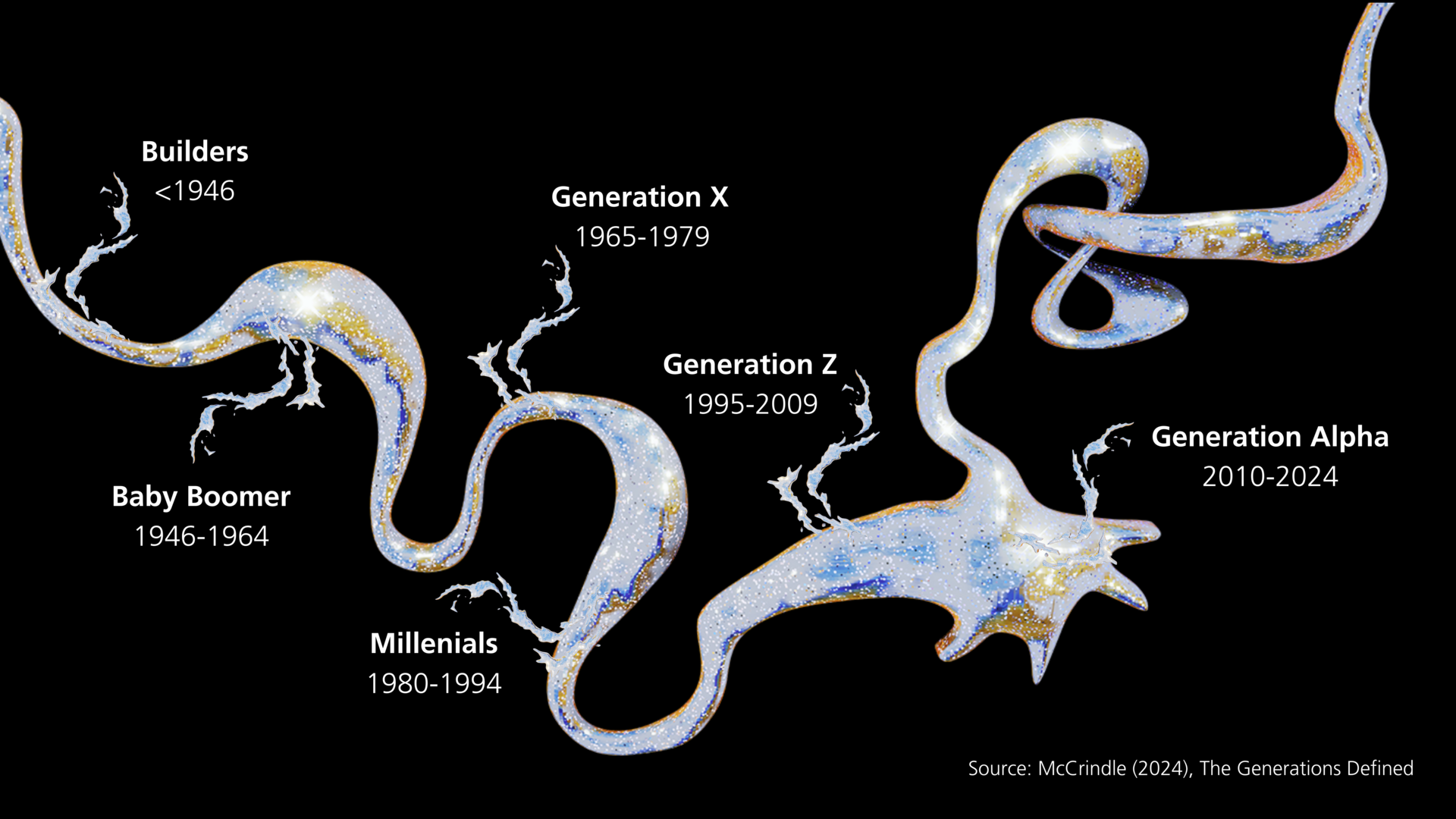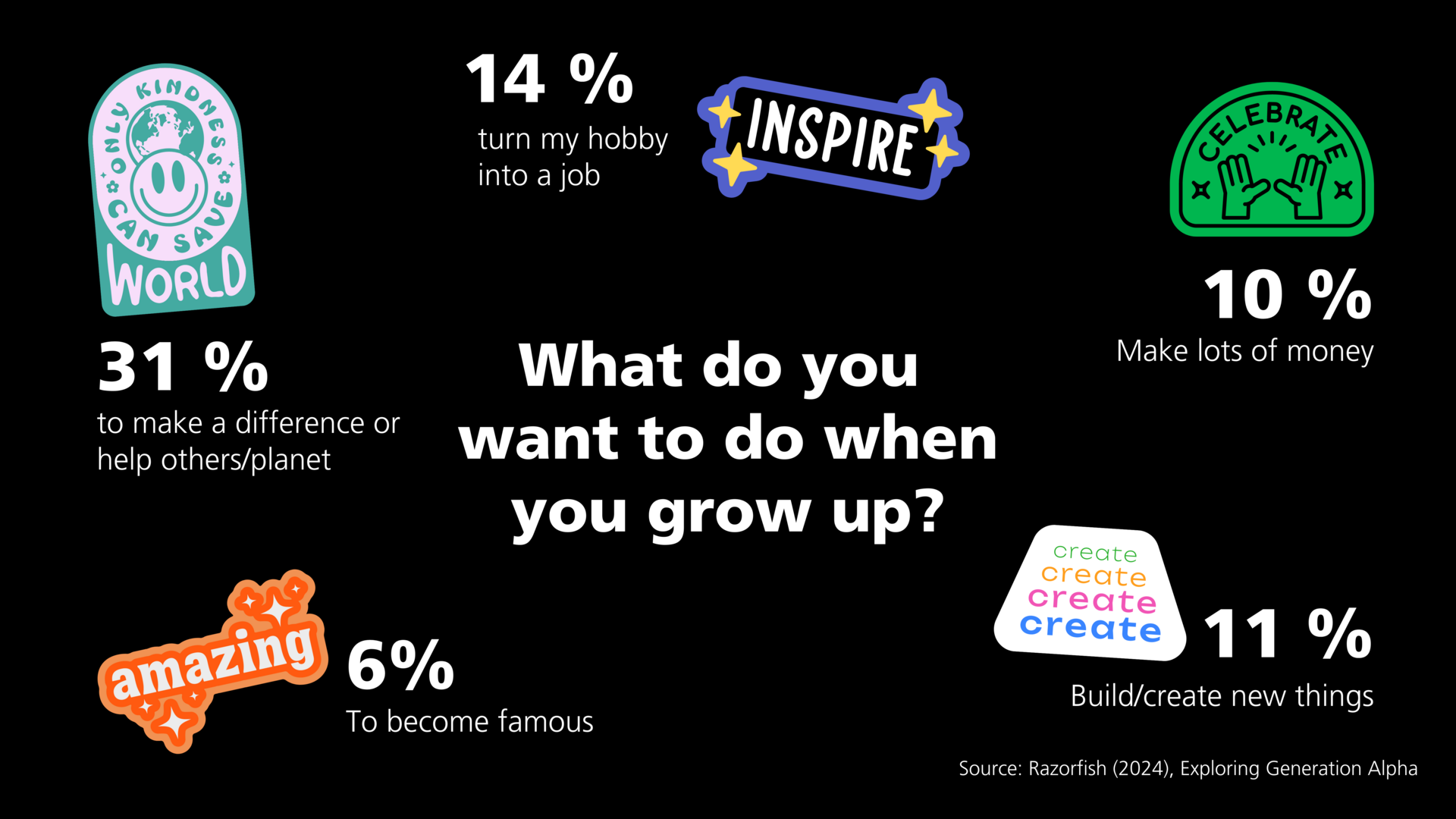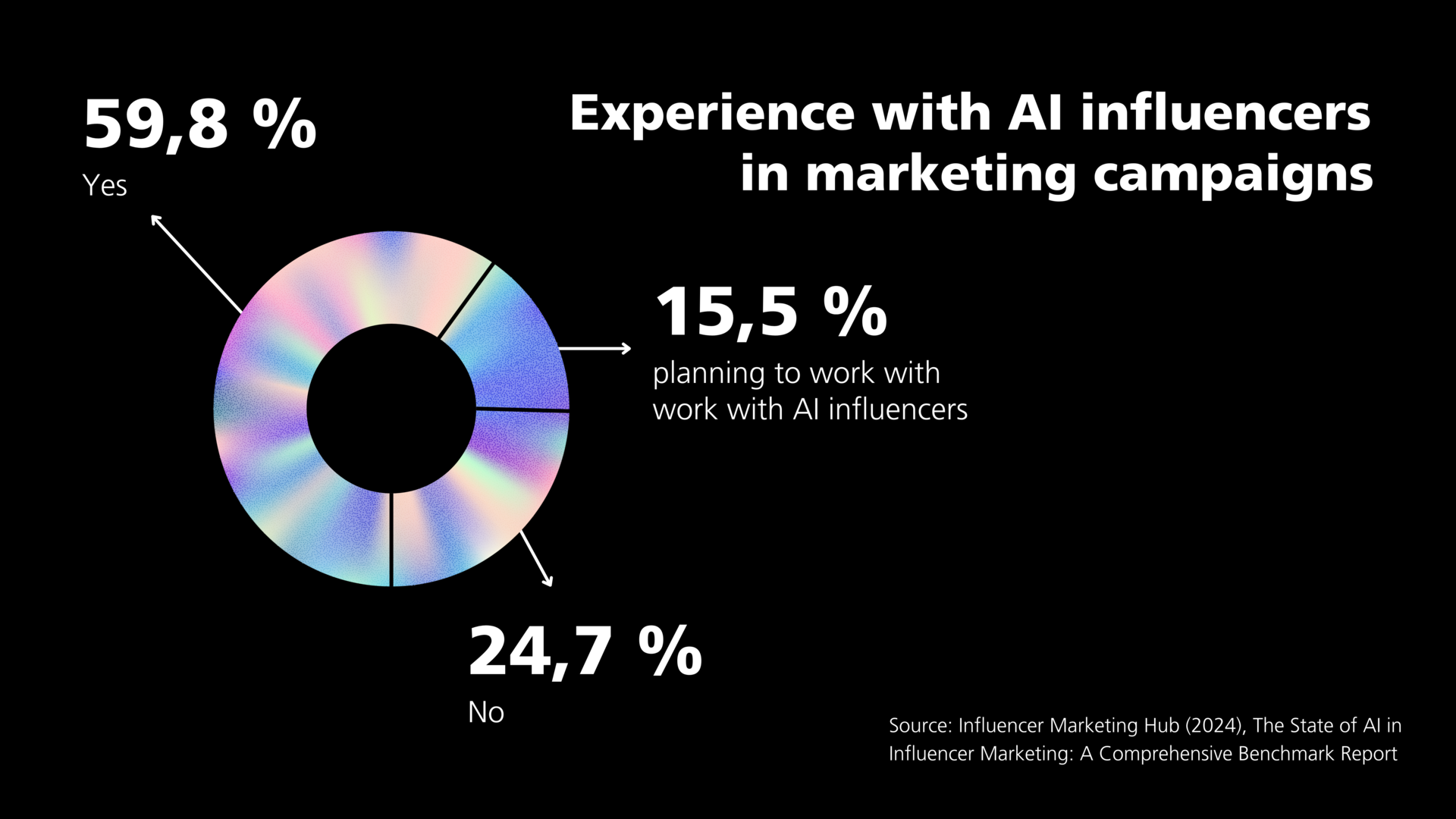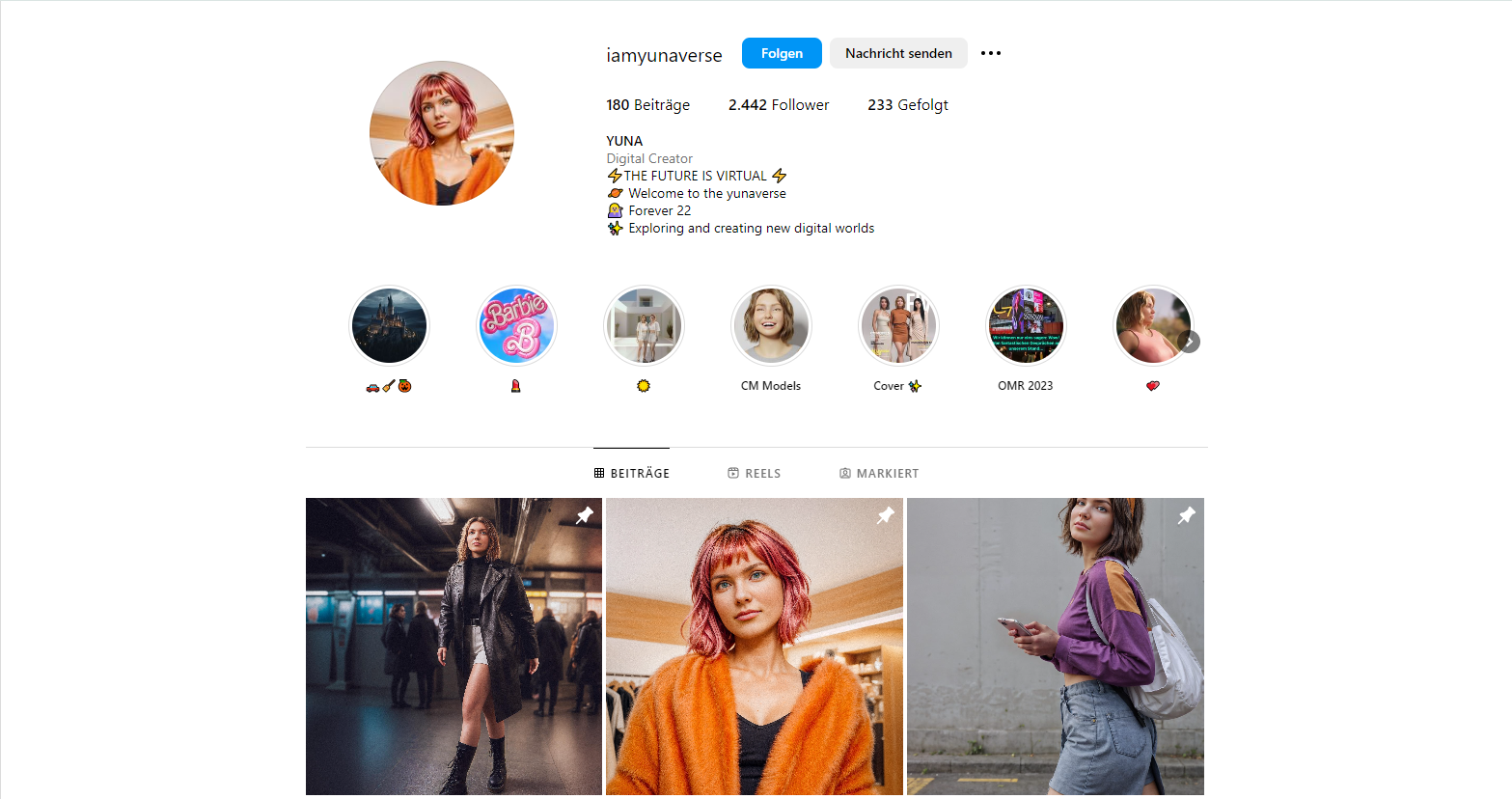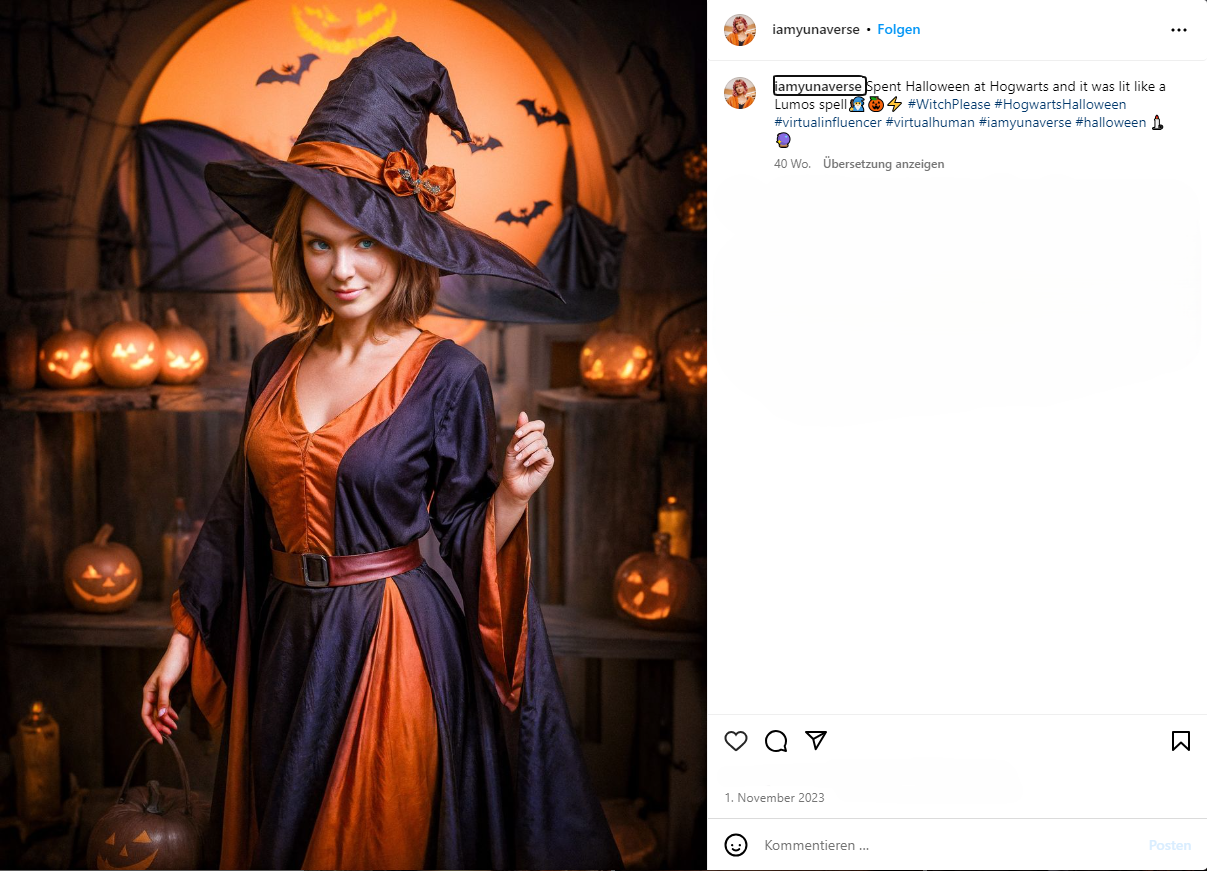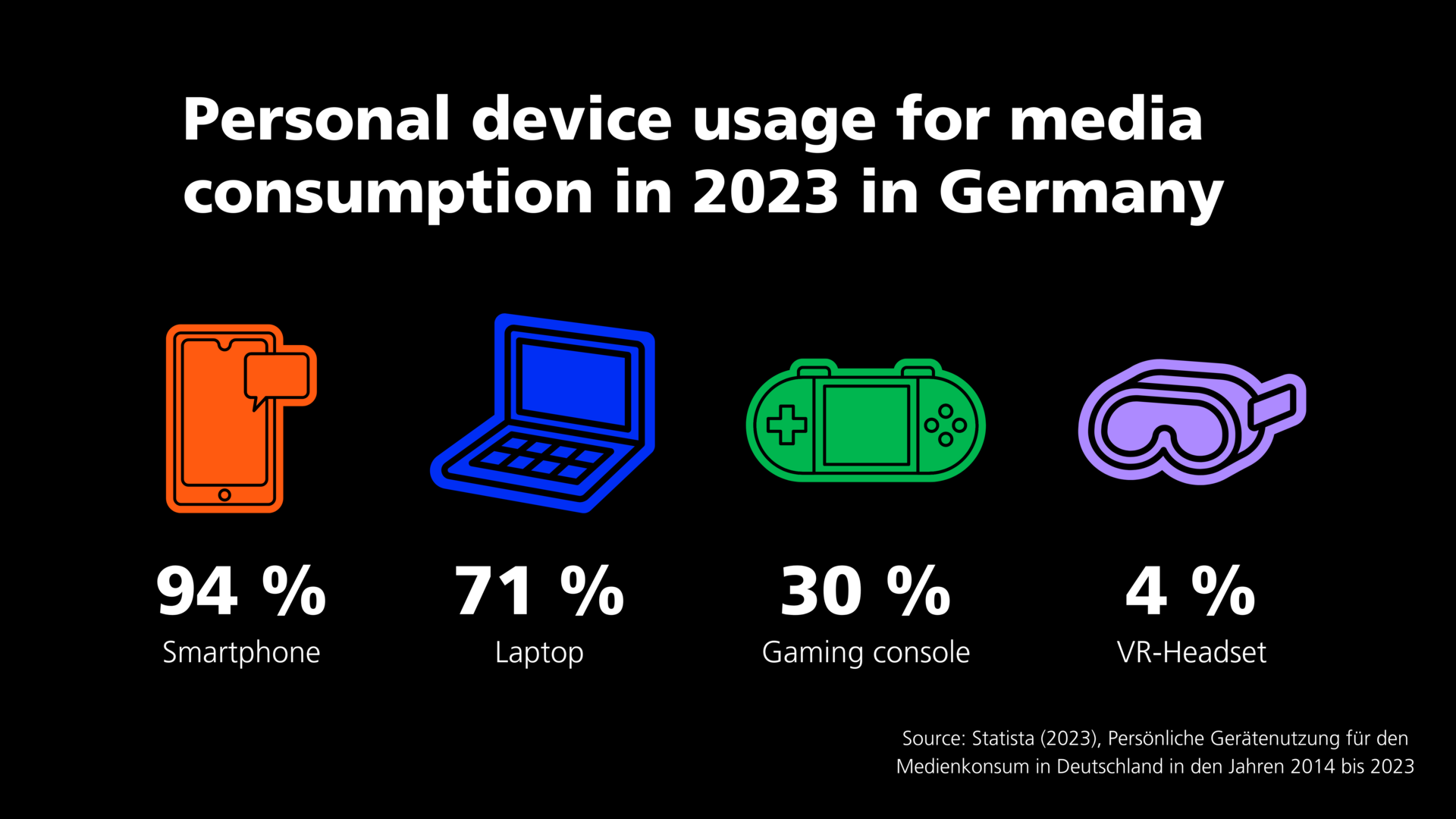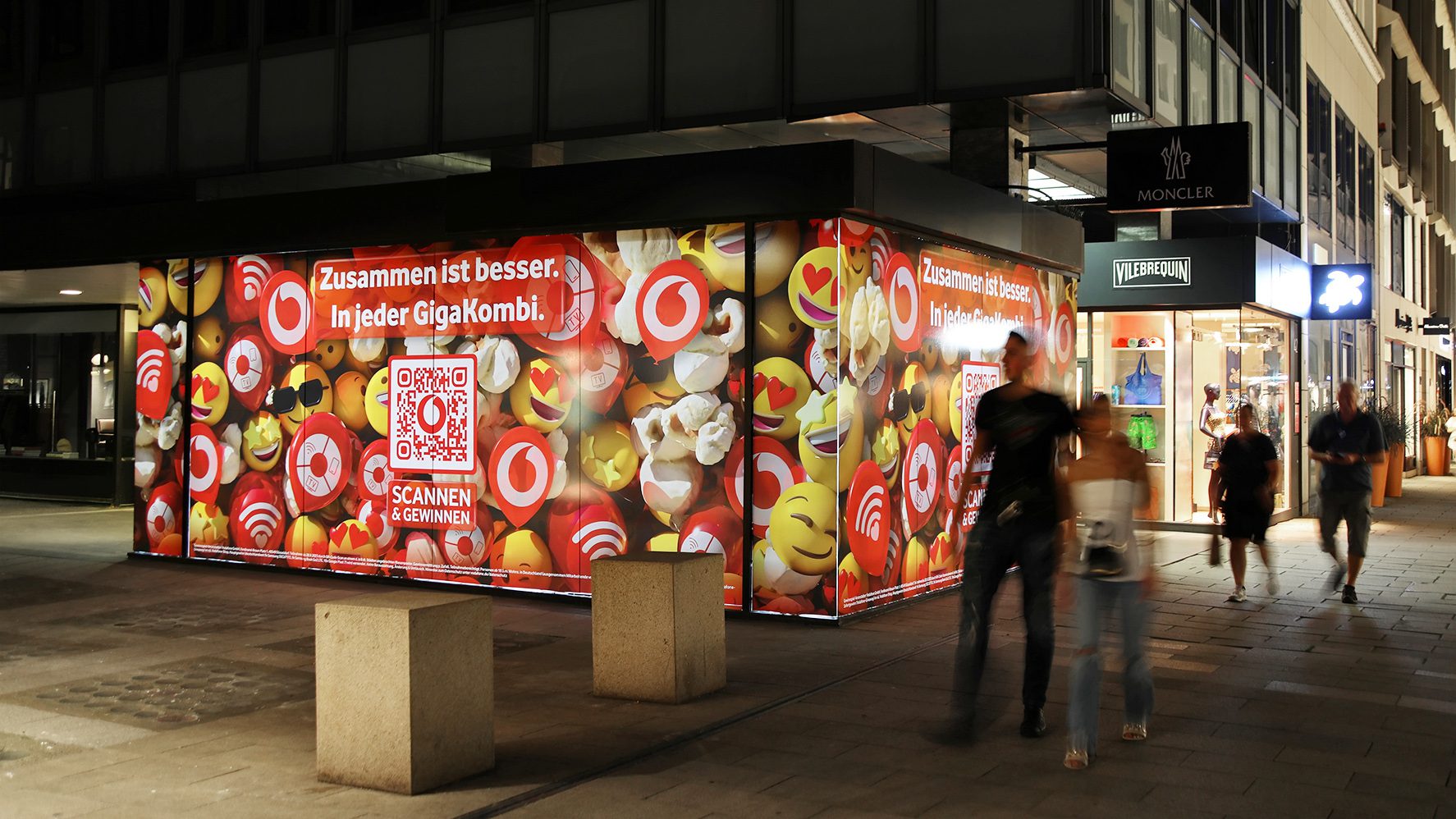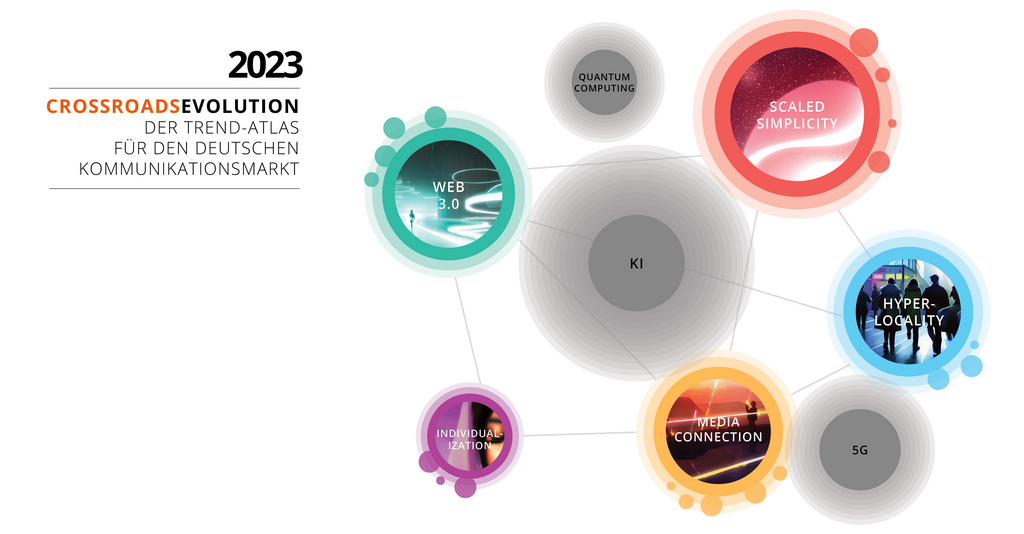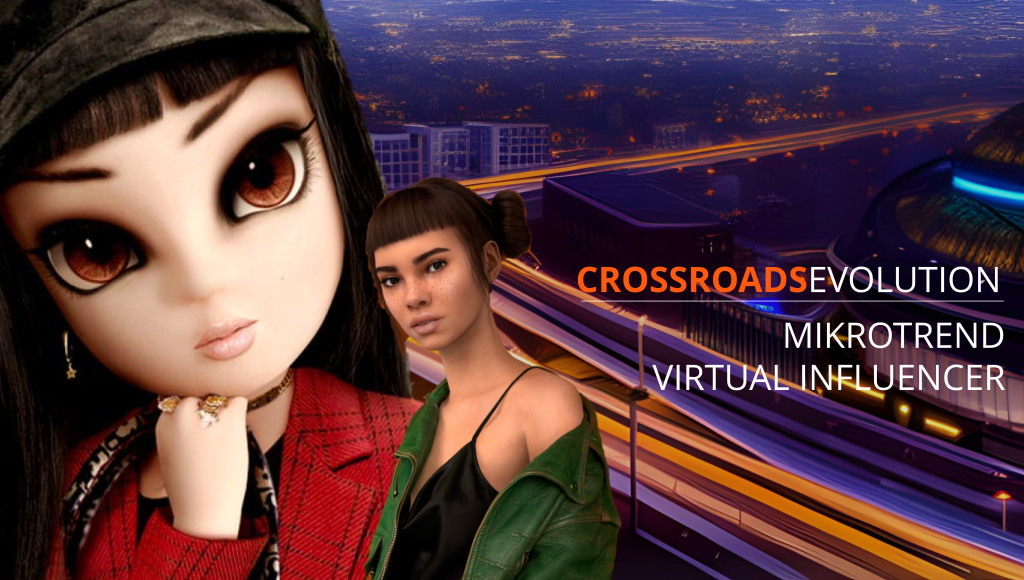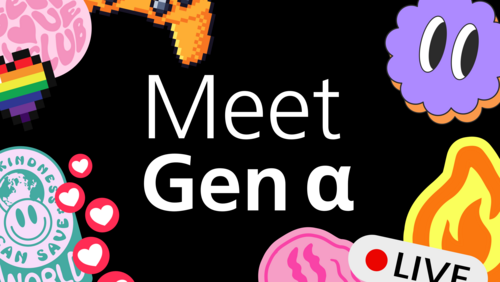
15. August 2024
Focus on the next generation: How marketing reaches Gen Alpha
Generation Z, who are now conquering the job market and exerting a stronger economic influence, is currently a hot topic among marketing and HR managers. Nevertheless, we dare to take a look into the future and ask ourselves: Who is coming next?
Generation Alpha may still be very young, but they are already leaving their mark on social media and developing an increased presence as consumers. In this article, we take a look at what is shaping Generation Alpha, what brands should prepare for and what this has to do with DOOH advertising.
Too long, didn't read
Not enough time? The most important facts at a glance
- Generation Alpha acquired media skills early on and is open to new technologies. They attach great importance to aspects such as gamification, interactivity, creativity and community.
- Thanks to the influence of their parents, education and current affairs, they are also much more enlightened and open to topics such as sustainability and diversity. This has resulted in strong values that they also expect from companies.
- In terms of media use, it is becoming apparent that immersive media, such as augmented reality or social video gaming, could be the next big milestone after social media. These should be optimized for devices that are already widely accepted by consumers: mobile devices.
- There are already best practices for the future of marketing: whether e-sports events on platforms such as Minecraft to get gamers excited about their tax returns, virtual influencers who stand up for diversity, body positivity and feminism or interactive AR campaigns in urban spaces on DOOH screens.
Who do we count as Generation Alpha?
Anyone who has been studying generational models for some time will have noticed that there is no clear answer as to when one generation ends and another begins. This is because it is not a scientific definition, but a sociological construct.
However, McCrindle's definition, which determines the beginning of Generation Alpha as 2010, is quite popular. This was also the year in which Apple launched the first iPad, a medium that many Alphas grew up with (which is probably where the cliché of the "iPad kids" comes from). Children born up to 2025 still belong to this generation and they are numerous: with 2 billion members worldwide, this is the largest cohort to date. But that is not the only superlative it is subject to. Gen Alpha is said to have the best standard of education and that future technologies and diversity are the most deeply embedded in their childhood to date. At the same time, a number of crises have had an impact on their development in a very short space of time.
A time of crises and opportunities: How Generation Alpha is growing up
In this time of polycrisis, Generation Alpha is experiencing major technological leaps and a multitude of challenges at the same time. The world they were born into is dynamic and increasingly complex. The key issues affecting this generation include:
COVID-19 pandemic
When children and young people no longer had any physical contact options due to the lockdowns, the need for social interaction was satisfied by communities on the web. Generation Alpha, like Gen Z, threw themselves into gaming instead: they attended virtual concerts by artists such as Travis Scott in Fortnite, played the viral "Who's the killer" game Among us together or held their graduation parties on Minecraft.
Social inequality
Studying hard, working hard at your job and then later having a house, marriage and children – that's the traditional life path. But the Alphas and Generation Z see from the example of the millennials that this only works financially for a few. The younger generations are therefore rejecting the status quo and want to live differently to previous generations.
Sustainability
Thanks to parents, social media and the like, Generation Alpha is much more aware and educated about topics such as climate change and diversity than previous generations. For them, values such as diversity, inclusion and environmental awareness are no longer "nice-to-haves", but are expected. They closely monitor the behavior of their brands, which is why transparency, authenticity and a genuine sustainability strategy are essential.
AI revolution
Artificial intelligence is on everyone's lips. What until recently appeared to be an abstract technology in the future has become more tangible than ever thanks to the publication of large language models such as Chat GPT. Nevertheless, artificial intelligence and its applications are still shrouded in mystery and the actual impact on our social relationships, our jobs and our lives in general is still unclear. This raises the question of whether the Alphas can be described as the first "AI natives" or whether it will become natively integrated into everyone's everyday lives like electricity.
Of course, the list of topics that characterize Generation Alpha does not end here – after all, we are living in a time of multiple crises. The news situation is overwhelming and everyone in society as a whole is permanently stressed. This is not surprising in view of the evolutionary background of humans, as the focus on the negative and thus the rapid recognition of dangers has ensured survival.
In the future, the alphas will inherit many of the crises listed above, such as the further consequences of climate change and therefore also issues relating to climate adaptation. This generation is therefore called upon to develop its own solutions – and it is good to know that they are in an excellent position to do so. After all, Generation Alpha will be the best educated generation ever.
And that's not all: Generation Alpha's number one career aspiration is not yet influencer or "something to do with media". According to a US study, 1/3 of alphas surveyed in the States say they want to help the planet or other people later on. They are driven by a desire for meaningfulness and a positive impact on the world.
Marketing for Gen Alpha: what brands need to prepare for
In the following, we present 3 ideas for communicating with Gen Alpha. Of course, we don't just stick to theory here, but also look at examples of how brands are already communicating effectively and innovatively today. Finally, we derive questions that can be helpful for the development of your own marketing strategy.
Impulse
Gamification, co-creation & community building
While the millennials see social media more as a platform to curate snippets of their lives as aesthetically as possible, or Generation Z is looking for relaxation in games, Generation Alpha has a deep need to express itself creatively. They are therefore creators themselves rather than a pure audience: if you search on YouTube, you will encounter a flood of impressive buildings on Minecraft or cozy themed islands on Animal Crossing. Minecraft in multiplayer mode itself is an excellent example of a digital place where Generation Alpha, as well as millennials and Gen Z, can let off steam creatively.
There are a variety of themed servers that players can join and play on together, such as Minecraft Middle Earth or Grand Theft Minecart. Special events such as re-enactments of canon events from the stories take place here on a regular basis. But it's also about much more than that, namely community. Hundreds of players have been working together on the servers for almost a decade and use tools such as Discord to communicate and plan. These are not closed communities; new players can always join and contribute to the project.
But some companies have also taken the plunge and found innovative ways to pick up younger generations where they like to be. Below we show you how a tax consultancy company has built up a community on Minecraft.
Best practice gamification, co-creation & community building
H&R Block goes Minecraft
When it comes to taxes, probably no one thinks of entertainment. But the tax consultancy H&R Block managed to create an immersive and refreshing experience around their core product. To do this, they organized a Minecraft e-sports event that was broadcast in livestreams and in which private users as well as some well-known e-athletes took part. The players moved around a specially designed map and interacted with branded characters such as "Sir Block". With this event, H&R Block wanted to pick up the target group of younger gamers on a rather unpopular topic, their own tax return, and position themselves as a sparring partner. It was important to them to interact with the target group in an informal way and not just use direct advertising to ensure the visibility of their products.
However, you don't always need a big event to get in touch with your own target group. Maintaining community spaces on social media also offers Alphas an opportunity to experience brands as human and approachable. For example, the YouTube platform is currently testing a digital community space where followers can post their own text messages.
What can we learn from this?
- To what extent can your own communication be enriched with creative and interactive content in order to strengthen the exchange within the target group but also between the target group and the brand?
- How can Generation Alpha help shape the brand and the brand experience through its own content (UGC)?
- Social media is not the only place where Alphas like to spend time. Platforms such as Minecraft or Roblox can offer brands completely new ways of communicating with their target groups.
- Looking to the future: What new tools for social media will enable new, exciting interactions to build a vibrant community?
- The next big thing: Will games and immersive technologies soon become more relevant for communicating with consumers than social media? It's worth keeping an eye on developments and acting early if necessary.
Impulse
Virtual influencers
With the constantly growing flow of AI-supported tools, a new generation of influencers is also on the rise: virtual influencers. They are not real, but are backed by entire editorial teams who slip into the role of the character and meticulously plan every post.
In the past, human influencers have already shown how much they are revered and how great their influence can be on younger generations. With virtual influencers, there are no limits to the imagination - brands can tell a variety of stories and appeal to very different target groups. With digital personalities that are perfectly tailored to the needs of their consumers.
In Germany, the trend is still generally viewed with skepticism. However, the hype surrounding applications such as Character.AI, which allows users to chat with their favorite fictional characters, shows that there is enthusiasm for such topics, at least among younger generations such as the Alphas.
Best practice virtual influencers
Yuna from Studio71 is forever 22
One example of a virtual influencer from Germany is Yuna. Her account started in the summer of 2022 under the name "iamyunaverse" on Instagram when she moved to Berlin at the age of 22. She takes a stance on topics such as diversity, female empowerment and body positivity - for example, she likes to attend CSD and report on her impressions there. This is her background story, which the editors of Studio 71 came up with for her. Studio 71 is a subsidiary of the Pro7 Group and created Yuna with the help of 3D modeling and scanning real people. The story and technical approach in particular resonated with the audience, the majority of whom are millennials and Generation Z.
The rights to the images shown below are owned by @iamyunaverse - comments and names of users in the posts have been removed for privacy reasons.
Social media platforms are also developing their own tools to scale the development of virtual influencers. TikTok recently introduced "Symphony Digital Avatars", which allows brands to use AI-generated avatars for their paid and organic marketing. The tool includes several applications, including AI-powered translation technology. Companies can choose between two types of avatars: Stock Avatars, which are commercially licensed and ready to use, or Custom Avatars, which can be personalized according to brand strategy. In the future, TikTok wants to use Symphony to support brands in communicating their content in an inclusive and authentic way and to overcome both language and cultural barriers.
What can we learn from this?
- It's a well-known fact - people follow people, not brands. Corporate influencers are very popular, so how about an AI influencer?
- The next step is to find out what story the brand ambassador can tell and how they will connect with the target group in the future. Social media is not the only suitable genre; DOOH could also offer new opportunities for interaction and help to make brands more approachable.
- Here, too, it is important to observe the market: Which tools, such as TikTok Symphony, can help to scale the concept around virtual influencers?
Impulse
DOOH, immersive technologies & the urban space
According to Everyrealm's market overview, immersive media is set to become the next milestone after social media. Immersive media includes virtual worlds, social video gaming, avatar worlds (metaverse), interactive experiences, virtual and augmented reality and haptic technologies. Currently, these technologies are almost exclusively found in the entertainment sector, but Generation Alpha could be the first generation for whom immersive technologies become a fundamental part of everyday life.
Anyone who is now thinking of bulky and overpriced VR headsets that have yet to really establish themselves on the market and doubts the acceptance of immersive media should pay attention now. Because acceptance is not tied to clunky AR and VR headsets - there are augmented reality applications that work on devices that found their way into our pockets more than a decade ago. It is much more likely that the majority of consumers will use immersive technologies on smartphones.
Best practice DOOH, immersive technologies & the urban space
Augmented reality advertising campaign from Vodafone
This was also the case with the interactive AR campaign by Vodafone Germany in cooperation with Edgar Ambient Media, BlowUp Media and the agency &And Innovation, which promoted the service provider's GigaKombi offer. From September 1 to 28, 2023, users were able to see virtual emojis, balloons and GigaKombi options floating through their surroundings after scanning a QR code. The campaign ran in eight major German cities, including Berlin's Alexanderplatz, on large-scale advertising media such as the CineStar Cubix. As part of the campaign, users had the chance to take part in daily competitions to win prizes such as smartphones or televisions.
The seamless integration of giant posters and mobile devices appealed particularly to young, trend-conscious target groups. The augmented reality experience was customized to the cityscapes of the different locations and was designed to be both entertaining and informative to effectively communicate the brand message. This campaign demonstrates how AR can revolutionize the perception of advertising and brand experiences by creating an interactive interface between physical and digital space. With this campaign, Vodafone shows how forward-thinking and creative AR technology can be used in advertising to increase user engagement and create lasting brand loyalty.
What can we learn from this?
- Immersive technologies are not necessarily dependent on headsets, but can already be optimized for devices that are widely accepted in the market.
- With the rise of immersive technologies, augmented reality could become an integral and valued part of DOOH campaigns - creating the multi-layered, interactive and seamless brand experiences that Generation Alpha desires.
- It is also worth thinking about community and gamification elements that can already be implemented without AR.
Take it with a grain of salt
Boomers, millennials, Gen Z and alphas - even if the generational concept is easy to understand and firmly established in marketing and the like, it should be treated with caution.The reality is more complex than this model and those who rely exclusively on it run the risk of thinking in pigeonholes or unintentionally discriminating against certain age groups.
Yes, people in a cohort experience formative events together.It makes sense to establish a connection. But not only age, but also individual lifestyles should be taken into account: The most famous example of seemingly identical people who couldn't be more different are the socio-demographic twins King Charles and Ozzy Osborne.
The authors from B4B Schwaben even suggest that marketing managers stop thinking in terms of generations altogether. Instead, they suggest so-called "value communities", as defined by the Sinus-Milieus.
Summary
Gen Beta, EU AI Act – what can we expect in the future?
But for the future, brands should keep the following points in mind: This generation is already present on the internet and they are also leaving their first traces as consumers. Their core values include diversity, sustainability and authenticity, which they also expect from companies. The majority of them have a high affinity for technology and expect innovative and interactive media - immersive media could therefore become the next milestone and it is worth following further developments in this area. In addition, aspects of community and creativity are important for brand communication in order to build a sustainable and close relationship with this target group.
In the end, we are left with the question – who is next? The Beta generation is already in the starting blocks and the first Beta babies will soon be born. These children are still a blank slate, but from today's perspective we can say that the existing trends will continue to intensify: Technologies will become even more deeply embedded in everyday life. With measures such as the EU AI Act, we are already making decisions today in the areas of ethics, data protection and co. that will influence the lives of betas.
Want to know more? Exchange ideas with us? Feel free to write to us: Strategie(at)stroeer.de
Media content in this blog post was created with the help of AI.
Text
- https://www.marketingdive.com/news/what-marketers-need-to-know-about-gen-alpha/689606/
- https://www.businesswire.com/news/home/20230801821357/en
- https://res.cloudinary.com/razorfish-com-assets/image/upload/v1690246086/assets/news-articles/exploring-generation-alpha/razorfish-tl-exploring-generation-alpha.pdf
- https://www.everyrealm.com/post/immersive-media-market-overview
- https://factorialhr.de/blog/generation-alpha/?variant=original#merkmale
- https://www.tagesschau.de/wissen/krieg-frieden-leibniz-institut-konfliktforschung-ukraine-100.html
- https://www.wokewaves.com/posts/generation-alpha-tech-future-vr-ai
- https://www.gamestar.de/artikel/minecraft-mittelerde-build-server-besuch,3363756.html
- https://newsroom.tiktok.com/en-us/announcing-symphony-avatars
- https://t3n.de/news/virtuelle-influencerin-yuna-content-projekt-studio-71-pro7-1504312/
- https://www.shiftbase.com/de/lexikon/generation-alpha
- https://www.generation-thinking.de/generation-alpha-genalpha
- https://invidis.de/2024/03/generation-alpha-so-werden-die-jungen-einkaufen/
- https://t3n.de/news/gen-alpha-gen-z-arbeitsmarkt-1615307/
- https://de.linkedin.com/pulse/wie-die-generation-alpha-welt-des-marketings-vincent-nicolai-iyvvc
- https://www.businessinsider.de/leben/international-panorama/gen-alpha-memes-gen-zers-und-millennials-fuehlen-sich-abgehaengt/
- https://kjmk.de/alles-ueber-generation-alpha/
- https://www.agentur-jungesherz.de/hr-glossar/generation-alpha/
- https://blog.hubspot.de/marketing/generation-alpha
- https://unicum-media.com/marketing-wiki/generation-alpha/
- https://www.spiegel.de/netzwelt/web/fortnite-konzert-von-rapper-travis-scott-sorgt-fuer-nutzerrekord-a-b377df69-74d2-4103-bbaa-98b40392afaf
- https://www.businessinsider.com/japanese-students-organize-minecraft-virtual-graduation-2020-3#one-of-the-students-also-posted-a-video-of-the-graduation-take-a-look-here-12
- https://lbbonline.com/news/hr-block-and-gale-bring-block-city-to-the-minecraft-metaverse
- https://www.socialmediatoday.com/news/youtube-tests-community-spaces-drive-fan-engagement/721416/
- https://www.absatzwirtschaft.de/ki-musiker-setzt-neue-marketing-benchmark-258406/
- https://t3n.de/news/virtuelle-influencerin-yuna-content-projekt-studio-71-pro7-1504312/
- https://blog.stroeer.de/innovation/augmented-reality-advertising-grossformat-setzt-neue-massstaebe/
- https://simon-schnetzer.com/generation-alpha/
Infographics
- https://www.instagram.com/iamyunaverse/?hl=de
- https://mccrindle.com.au/article/topic/demographics/the-generations-defined/
- https://www.razorfish.com/articles/perspectives/exploring-generation-alpha/
- https://influencermarketinghub.com/ai-in-influencer-marketing/#toc-1
- https://de.statista.com/statistik/daten/studie/476467/umfrage/persoenliche-geraetenutzung-fuer-den-medienkonsum-in-deutschland/
https://www.blowup-media.de/2023/09/25/vodafone-augmented-reality/
Videos
- https://youtu.be/_VKLCwzfKKc
ChatGPT-4o mini was used as a supporting tool for the research and SEO optimization of this blog post. The information generated was not adopted unchanged, but carefully checked and verified by our editorial team. The final text was written and checked entirely by humans.



